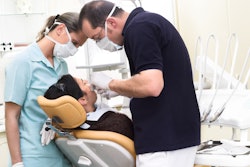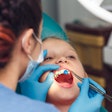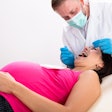
The low rate of dental visits during pregnancy demonstrates the need for better prenatal dental care. Future policies should prioritize pregnant women and dental care access, according to a study published on September 12 in the International Dental Journal.
Interventions are needed to address the oral health needs of vulnerable pregnant women, particularly those with low income, limited dental insurance, and less education, the authors wrote.
"To ensure maternal and child health, pregnant women should be a high priority in policies aimed at improving access to dental care,” wrote the authors, led by Yasaman Mohammadi Kamalabadi of the Western University Schulich School of Medicine and Dentistry.
The cross-sectional study of pregnant women was conducted using data collected through a self-administered questionnaire adapted from the Canadian Health Measure Survey. A total of 130 women age 18 and older completed the questionnaire.
Among respondents, the most common oral health issues were bleeding gums (49.6%), tooth sensitivity (37.2%), bad breath (23.3%), and swollen gums (19.4%). Univariable analyses showed that marital status (p = .004), education level (p = .001), quality of life (QoL) (p = .007), general health (p = .035), and morning sickness (p = .034) were significantly linked to self-reported oral health, according to the results.
Based on p-values < 0.1, factors such as marital status, education, QoL, general health, morning sickness, and toothbrushing/flossing frequency were included in further analyses. The final model showed that women with college or university education (p = 0.005, odds ratio [OR] = 3.7) and those with better QoL (p = 0.028, OR = 5.0) were more likely to report good oral health, the authors wrote.
Most participants (77.7%) had visited a dentist within the last two years, but only 26.9% had done so during pregnancy. Reasons for not visiting a dentist included cost (36.3%), perceived lack of necessity (29.7%), and prior dental visits before pregnancy (14.3%).
Furthermore, toothbrushing frequency was significantly linked to recent dental visits (p = .007), with those brushing at least twice daily having higher odds of visiting a dentist in the last two years (p = .003, OR = 4.0), according to the results.
However, the study had limitations. While this targeted approach effectively gathered data on vulnerable pregnant women, it may not apply to other similar groups with different challenges, the authors added.
"Further studies with larger sample sizes and more diverse populations are needed for a better understanding of pregnant women's unmet oral and dental needs," Kamalabadi and colleagues wrote.




















